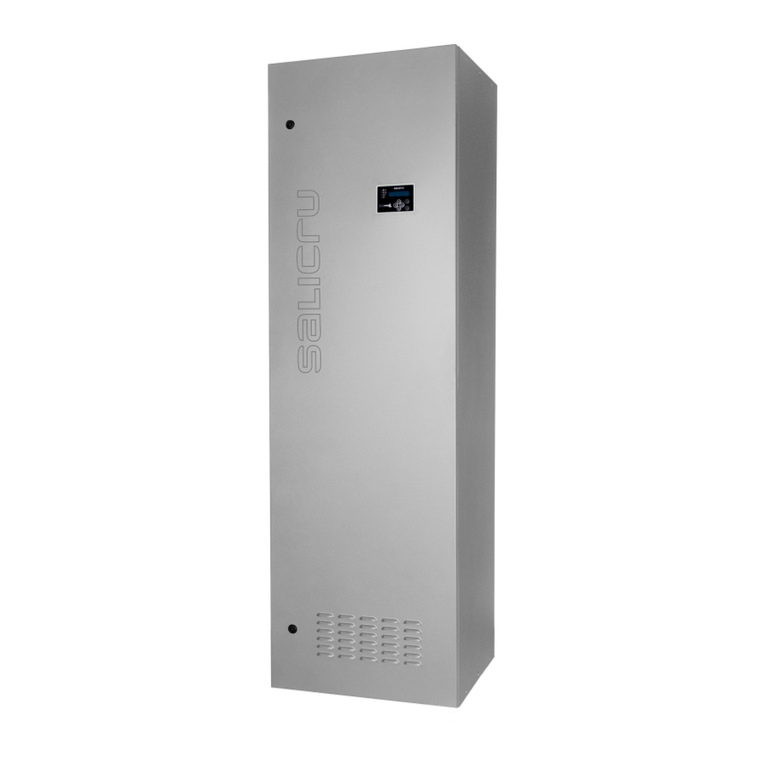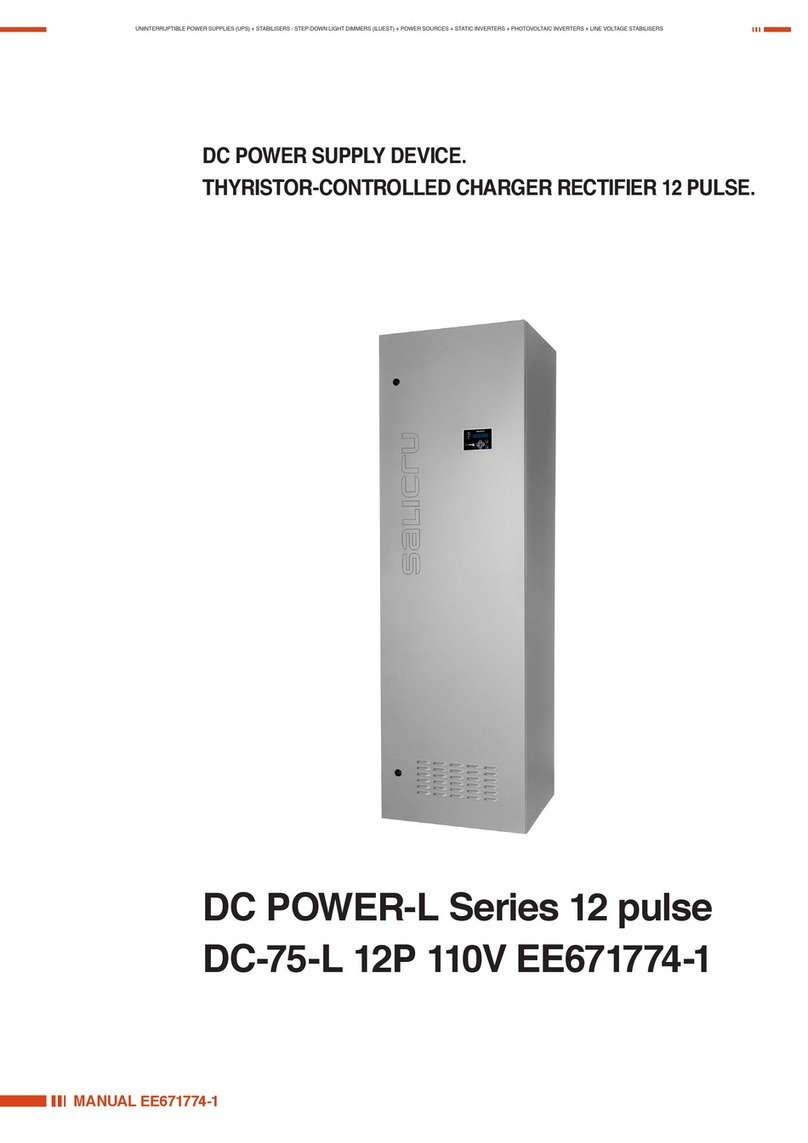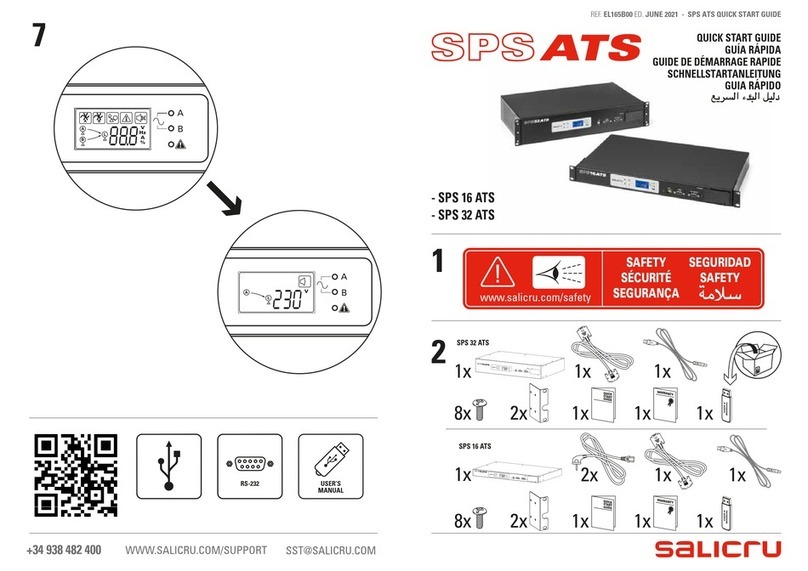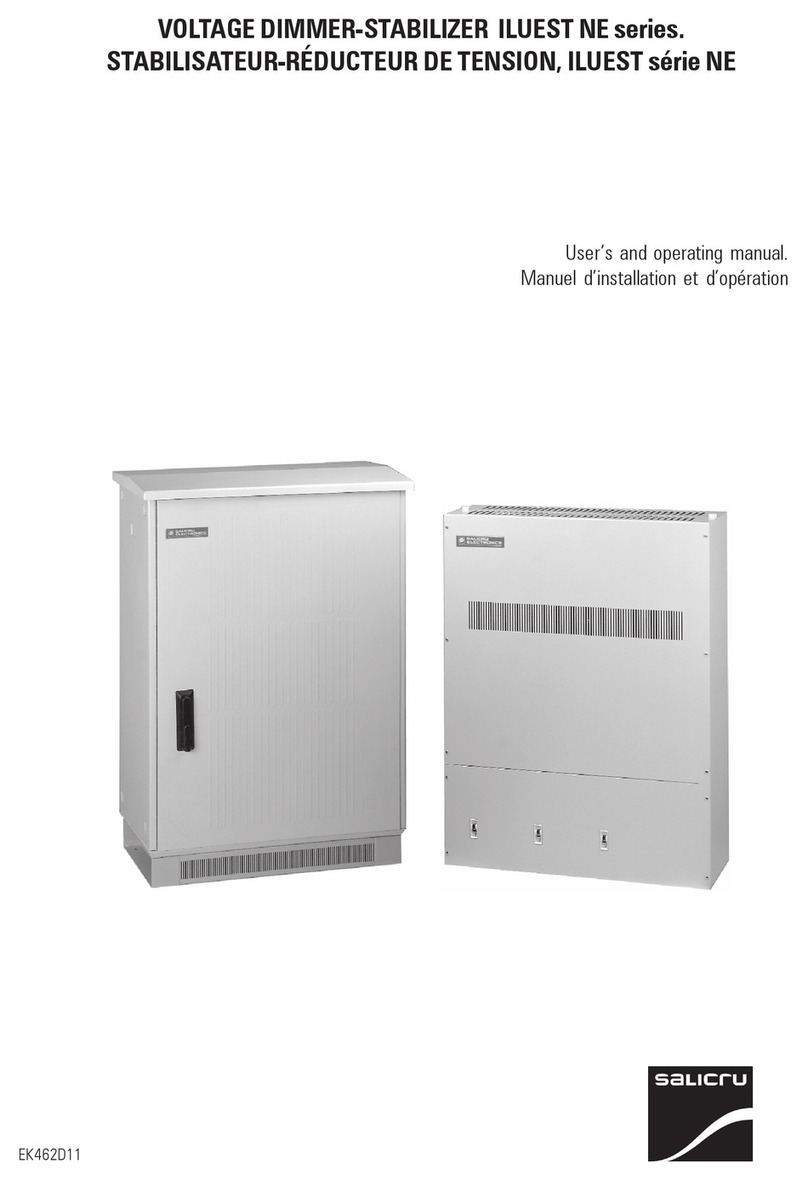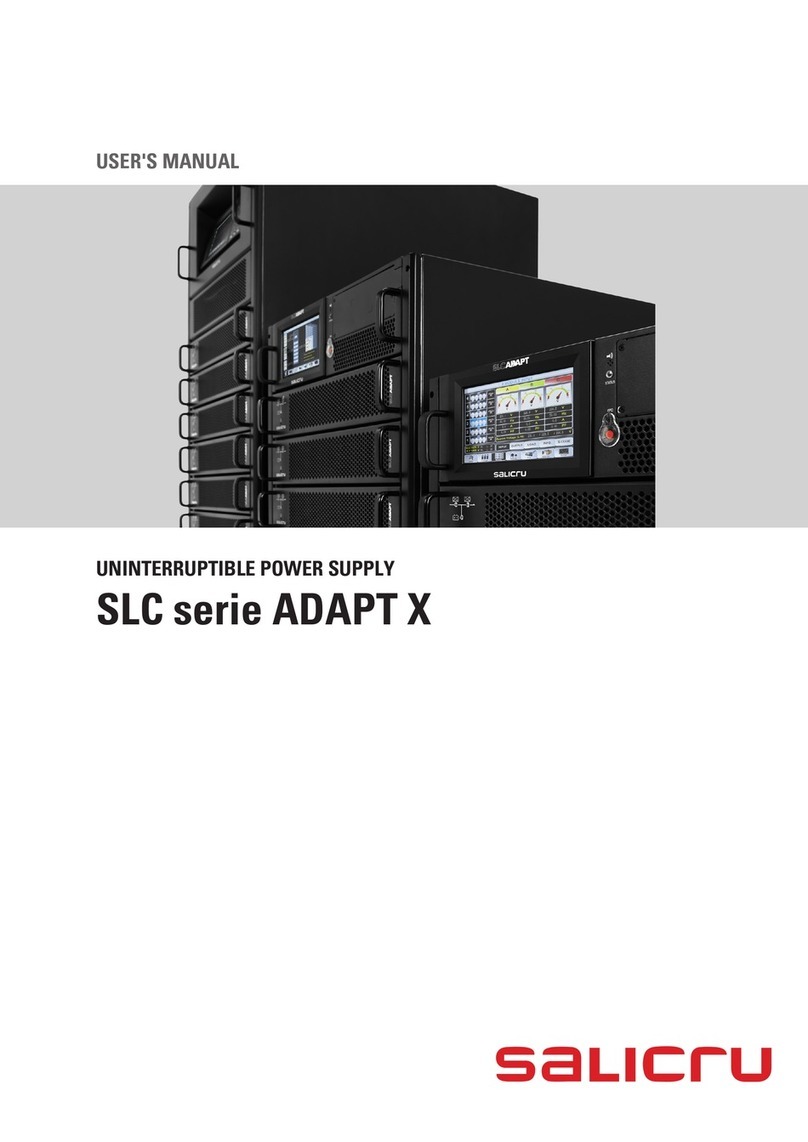
7
SALICRU
4. Presentation.
The power supply systems from DC Power-S series are com-
pact, flexible and modular equipments. These equipments are
adaptable to the environment location or they can be supplied in
any of their available structures.
In any case, they allow to upgrade the power and/or back up
time as soon as the needs are increased or to implement some
options in future, which have not been foreseen initially, in order
to be adapted to the new requirements that could arise in the
installation, i.e. to extend the communications of the equipment.
Although the Rectifier Module is the minimum expression as
equipment that can supply DC voltage from an AC input voltage
(see Fig. 1), by only itself can't work, and it is required the Con-
trol Module, which supervises and manages the input and output
measurements, battery charging currents, critical and non-critical
loads control, communication channels with the environment,...
According to the current needs, there is a basic Communication
module, which is supplied as standard, being able to extend it.
The basic and minimum structure of the DC Power-S system
is the subrack version (See Fig. 2), which will be made up by:
• A rectifier module.
• A control module.
• A 19" subrack and 4 U height with its telescopic fixing guides,
which includes the «Backplane» to plug the two previous
quoted modules.
• A communication module.
• Input, battery and output terminal block.
• And input, battery and output protections.
The whole will be supplied as a completely finished unit, ready to
be installed in a cabinet by means of the telescopic fixing guides.
As it can be noticed, the subrack has the capacity to house up to
two rectifier modules of the same features, so the basic unit can
be itself upgraded.
For other configurations, different kind of cabinets with different
capacities are available, allowing from a minimum of one rectifier
to generate structures up to 30 rectifiers, which is the maximum
number that the control module can manage, therefore powers
up to 81 kW. This way it is adapted to the most of the end-user's
installations.
The illustrations of this chapter show the different manufactured
versions or structures as standard and they only expect to be a
mere guide to identify the described parts in this user's manual.
Regarding the physical layout of the DC Power-S modules and
other parts, control module included, is not always the same
for all the systems and there could be differences as a result of
the quantity of rectifier modules that the system has, without af-
fecting to the operating of the DC energy power supply.
Regarding the illustrations of this document, together with the
correct labelling of the own equipment, simplify the identification
of each part and therefore they improve the interpretation of the
documentation, which favours the understanding of the instal-
lation and/or commissioning and shutdown procedures of the
system.
The DC Power-S system can be supplied in the following ver-
sions:
• 19" Subrack with 4 U height and designed to be installed in a
cabinet by means of the fixing guides (See Fig. 2).
Batteries both they are supplied together or the end-user al-
ready have them, can be fitted in the same cabinet.
Any other possibility is feasible, but as it is the most eco-
nomic, it is the simplest way.
• Table top case system, which has separators parts -feet- in
its base (See Fig. 3).
Batteries both they are supplied together or the end-user al-
ready have them, have to be fitted in a closed enclosure or
rack as minimum.
• Case system with capacity to house the batteries. From the
table top version, a case with swivel casters can be added
to its base, which will allow housing a determined battery set
(See Fig. 4).
The housing of this case is limited and it is not foreseen to
upgrade it for very long back up times. In such case, it will be
necessary to go to other versions.
• System of 1210 mm rack cabinet height, with additional level-
lers feet of 110 mm, so the total height will be 1320 mm. It is
available in 600x600 and 600x800 mm cabinet base dimen-
sions.
Initially, the rectifier is based on «N» modules that take part
of the cabinet and the rest is free for batteries housing (See
Fig. 5 and 6).
• System of 2010 mm rack cabinet height, with additional lev-
ellers feet of 110 mm, so the total height will be 2120 mm. It
is available in 600x600, 600x800 and 800x800 mm cabinet
base dimensions.
Initially, the rectifier is based on «N» modules that take part
of the cabinet and the rest is free for batteries housing (See
Fig. 7 and 8).
• 1210 mm battery cabinet height, with additional levellers feet
of 110 mm, so the total height will be 1320 mm. It is available
in 600x600 and 600x800 mm cabinet base dimensions. (See
Fig. 9 and 10).
• 2010 mm battery cabinet height, with additional levellers feet
of 110 mm, so the total height will be 2120 mm. It is available
in 600x600, 600x800 and 800x800 mm cabinet base dimen-
sions (See Fig. 11 and 12).
As an option, 210mm lifting feet with their respective covers
for perimeter closing can be supplied, in order to replace the
110mm standards ones.
The cable entry into the equipment is foreseen through the
bottom of the cabinet, therefore the terminal blocks will be lo-
cated in this area. Nevertheless, under particular requirements it
can be done through the top, so it will mean to invert the equip-
ment layout, because the terminal blocks will be at the top, fol-
lowed by the protections.
Figures 5 to 8 show a number of «N» rectifier modules connected
in parallel as an example and as mere user guide, with the most
frequent devices and requested options. If any of the related
parts in the illustrations are not available in your unit, ignore any
reference or action over themselves. When its appropriate, an
additional explanatory annex documents will be edited for those
equipments manufactured with special requirements.

